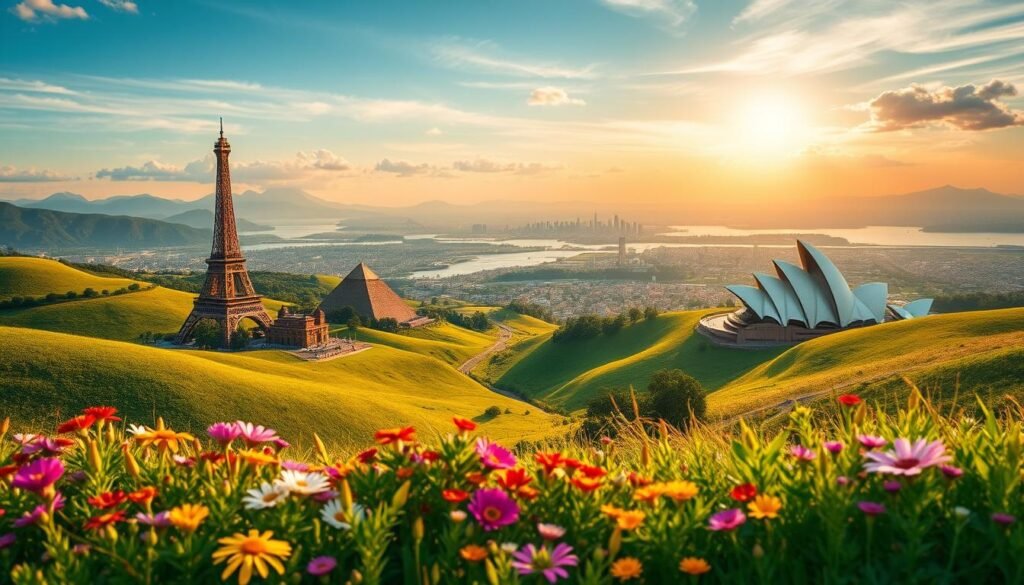1.45 billion international trips were taken in 2024, and that scale tells you something simple: people still crave real places and real moments. France, Spain, and the United States led arrivals, while the U.S., Spain, and the U.K. topped receipts — numbers that signal strong services, easy logistics, and memorable days on the ground.
I’ll guide you through a compact, practical roadmap that blends UNWTO data with my own on-the-ground notes. I focus on the kind of places that make a trip feel effortless and exciting, whether you want beaches, cities, nature, or quick day moves.
This intro lays out how I balance stats and experience: which destinations show robust infrastructure, which deliver major sights, and how to pick a place that fits your time and budget. Use this guide as a shortlist builder, then narrow down to the perfect destination for your next trip.
Key Takeaways
- Global travel is booming: 1.45 billion trips in 2024 shows wide choice and strong services.
- High arrival and receipts figures point to reliable infrastructure and rich experiences.
- I combine data and field experience to make a compact, usable list for your trip.
- Sectioned themes help you jump to beaches, cities, nature, or road trips quickly.
- Simple timing and crowd tips help you make the most of day-one moments.
What I look for when I pick the best countries to visit
When I choose a destination I look for clear signals that your trip will feel effortless from day one.
I weigh practical factors: access, safety, and a mix of places so you can change plans without losing time. I favor nations with mountains, coast, and cities because variety makes trips flexible.
I watch how people treat visitors. A friendly local can turn a good place into a lasting memory. I also study transport: trains, regional airports, and walkable cores let you spend more of your time exploring, not commuting.
I use UNWTO arrivals and receipts as a reality check. Data from France, Spain, the United States, Turkey, Italy, and Japan shows which destinations combine scale with reliable services. That helps me judge where iconic sights and rewarding second cities coexist.
- I prefer options: guided tours, self-drive, trains, or easy day links for any way you like to travel.
Data-backed top countries to visit right now (present)
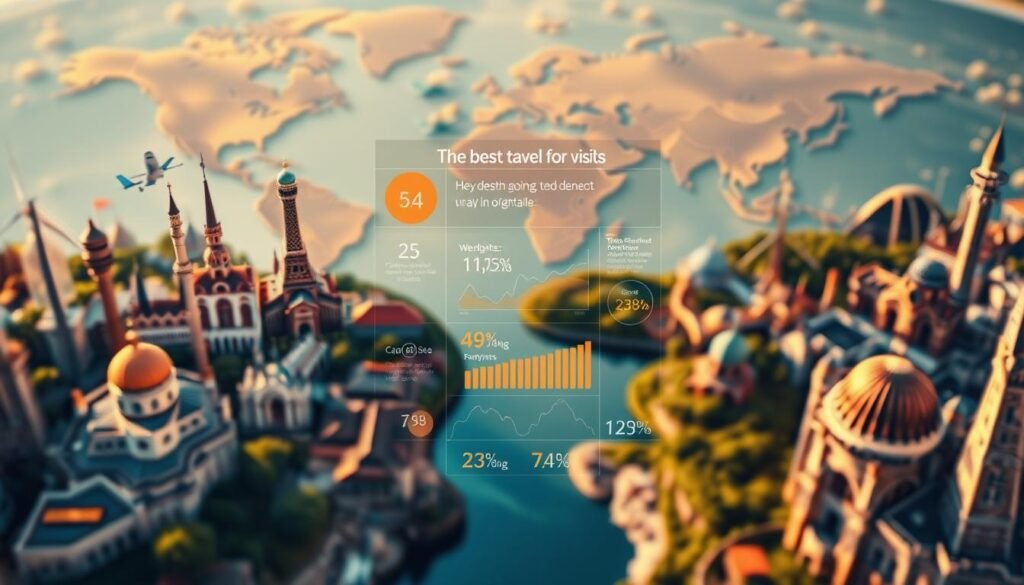
Numbers give us a fast map: arrivals and receipts show which places will run smoothly for travelers now.
Most visited destinations by arrivals
France, Spain, United States, Turkey, and Italy top arrivals in 2024. On the ground that means busy museums, long lines at flagship city sights, and lively public squares at peak time.
Big spenders you’ll feel in quality
High receipts often equal deeper hospitality systems. The United States, Spain, United Kingdom, France, and Japan show more trained guides, multilingual tours, and reliable transport that save you time and stress.
Why these rankings matter for planning
Use arrivals to time visits and receipts to judge service levels. Pair a headline destination with a quieter neighbor for contrast. Book rail passes, guided tours, or museum slots early if the table below shows heavy arrivals.
| Metric | Top Arrival (M) | Top Receipts (US$B) |
|---|---|---|
| France | 102.0 | 77.1 |
| Spain | 93.8 | 106.5 |
| United States | 72.4 | 215.0 |
| Japan | 36.9 | 54.7 |
My traveler’s take after years on the road
After years on the road, I judge places by how quickly they feel like home. Small routines and friendly faces change a trip from checklist to memory.
Where I’ve felt most at home and why that matters
Norway, South Africa, Namibia, the Philippines, and Colombia each gave me moments that reshaped my view of travel. In Norway the quiet landscape matched my pace. In South Africa the variety of scenes and people made every day fresh.
“A local tip or a shared sunset can turn a place into something you carry long after the trip ends.”
- Simple local rituals—market coffee, evening walks—made the experience richer.
- Friendly locals eased logistics and upped the sense of belonging.
- Short stays let me test a vibe, then return to deepen it.
| Place | Why it felt like home | Try |
|---|---|---|
| Norway | Calm pace and easy nature access | Coastal walks and local bakeries |
| South Africa | Diverse scenes and warm people | Neighborhood markets and small-town dinners |
| Namibia | Affordable, vast dunes and quiet | Desert sunrise drives |
| Philippines | Warm hospitality and island life | Local ferry rides and roadside stands |
| Colombia | Welcoming vibe and lively neighborhoods | Coffee shops and evening plazas |
Test a place with short trips, then linger if it fits your way. Those small times shape the trips you replay for years.
Epic nature and national parks that define a country
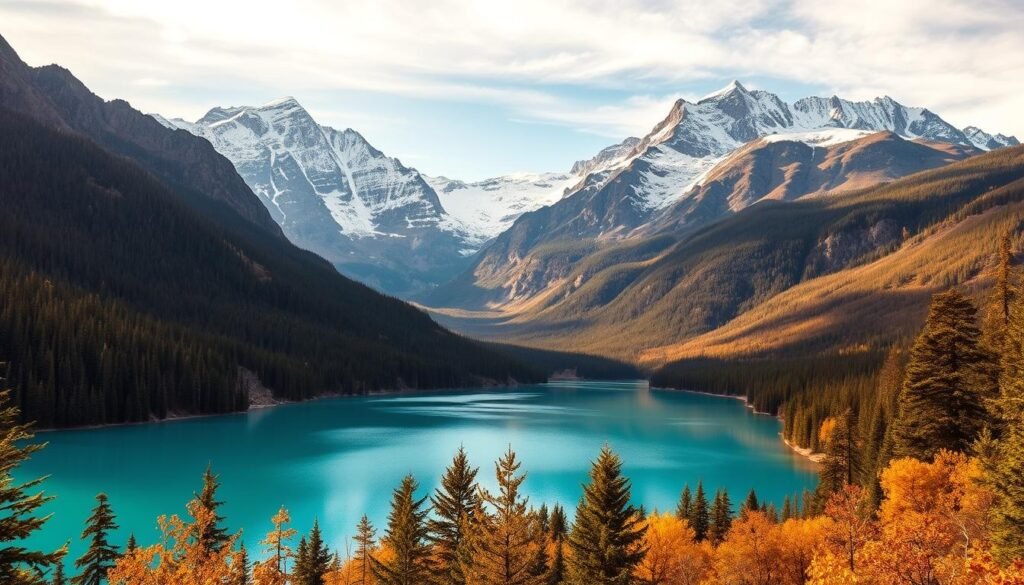
When I plan nature-driven routes, I start with the national park that defines a place.
New Zealand: South Island road trip, alpine hiking, and fjords
The South Island ofNew Zealandis a seamless road loop of fjords, alpine passes, and lakes. I map a South Island loop that pairs day drives with short hikes so you get grand views without burning out. The alpine routes and coastal fiords make every stop feel like the main event.
Patagonia: Torres del Paine to El Chaltén
Patagonia splits its energy well. Chile’s Torres del Paine National Park offers classic granite spires. Argentina’s El Chaltén delivers day hikes that punch above their length. explora Patagonia’s Salto Chico runs guided excursions if you want an all-inclusive way to see both sides.
United States: Yellowstone, Yosemite, and Alaska wilderness
The U.S. packs variety: Yellowstone’s geothermal drama, Yosemite’s granite walls and waterfalls, and Alaska’s Denali and Kenai Fjords for big wilderness. Alaska works by cruise or land, and winter brings a real Northern Lights chance.
Iceland: Blue Lagoon, Golden Circle, and Northern Lights
Iceland mixes easy day drives and dramatic nights. Soak the Blue Lagoon (98–102°F) then self-drive the Golden Circle in one clear day. For sky shows, aim for Nov–Feb when the Northern Lights peak.
“Match hiking days with recovery stops—hot springs, coastal towns, or glacier viewpoints—so each day finishes energized.”
- How I arrange days: alternate scenic drives with shorter hikes.
- Pacing tip: use hot springs or small towns as recovery places.
- Packing: layer for swings from fjord winds to Icelandic nights.
| Region | Signature site | Why go |
|---|---|---|
| New Zealand (South Island) | Fiords & alpine routes | Road trip loops and short alpine hiking |
| Patagonia (Chile & Argentina) | Torres del Paine / El Chaltén | World-class hiking and guided excursions |
| United States | Yellowstone, Yosemite, Denali | Geothermal drama, waterfalls, big wilderness |
| Iceland | Blue Lagoon & Golden Circle | Geothermal recovery, easy day self-drive, Northern Lights |
Countries with unforgettable world wonders and history
![]()
C
The handful of sites below repay extra planning—early starts, split visits, and paced walks make the moments stick.
Peru: Machu Picchu and the Sacred Valley
I prefer a two-visit approach at Machu Picchu: a morning entry for clear light and a late-afternoon return for softer photos.
Staying near the ruins lets you offset weather and use multiple entries. Cusco is the obvious city base for guided tours or DIY day trips into the Sacred Valley.
Jordan: Petra’s Treasury and the Monastery day trip
Petra dates to the Nabateans and rewards patience. A long day trip from Amman by private car or bus gets you the Treasury and the Monastery hike.
Pace the walk: pause at shaded corners for views and water, then push on for the high terraces near the Monastery.
China: Great Wall sunrise strategies
For quiet times on the wall, aim for Mutianyu at first light. I book private transfers to beat group buses and carve out a peaceful hour on the stones.
Egypt: Pyramids of Giza without the crowds
The Great Pyramid belongs to Khufu; the others to Khafre (Khufu’s son) and Menkaure. Entering the second or third pyramid is often cheaper and easier.
- Start at sunrise for soft light and thinner crowds.
- Enter the 2nd or 3rd pyramid, then circle for photos from higher vantage points.
- Finish with a relaxed coffee near the plateau and a final view at golden hour.
“Small pauses—upper terraces at Machu Picchu or the Treasury’s shaded nooks—turn a crowded place into a personal moment.”
- City bases that simplify logistics: Cusco, Amman, Beijing, Cairo.
- Guided tour vs DIY: tours save time and context; DIY gives pace control—choose what fits your travel style.
- Always build buffer times for weather and checkpoints so your history moments feel calm and earned.
Beach and island escapes I can’t stop thinking about
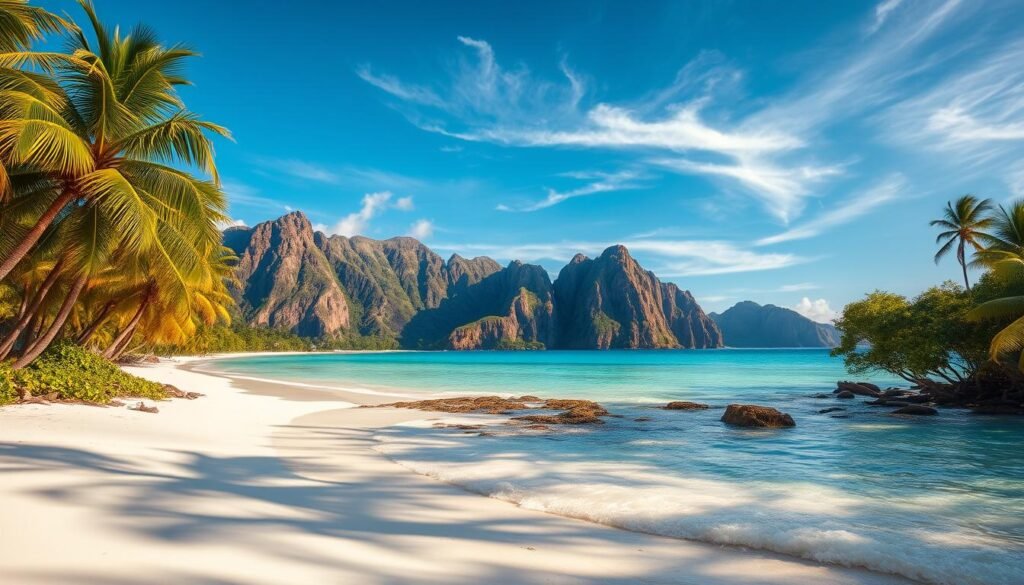
Coastal escapes and tiny islands often reset my travel tempo faster than any city break. I sketch short routes that balance lazy shore days with a few inland surprises.
Philippines: Palawan, Siquijor, and rice terraces
I map an island-hopping flow that links Palawan’s lagoons with Siquijor’s slow pace. I weave in day detours to the Banaue rice terraces or Sagada for contrast and local warmth.
Croatia: Dalmatian isles and Plitvice Lakes
Pair Dubrovnik or Split as your city base, then slip out to Dalmatian islands. I time Plitvice Lakes national park entries early or late to dodge the mid-day tour surge.
Greece: islands, Athens and Meteora
My Athens-plus-islands plan adds a Meteora leg so you get both beach life and dramatic inland views. I weigh tour choices versus independent day boats in Palawan and Dalmatia so you can match comfort with adventure.
- Timing tip: pick morning ferries and short flights so more of your trip is water time, not lines.
- Packing: sunhat, quick-dry layers, reef shoes for last-minute swims and viewpoint hikes.
Listen to the vibe each day—some places are lively, others quietly restorative—and pick the mood that fits you.
Urban culture hits: cities, restaurants, and history in one trip
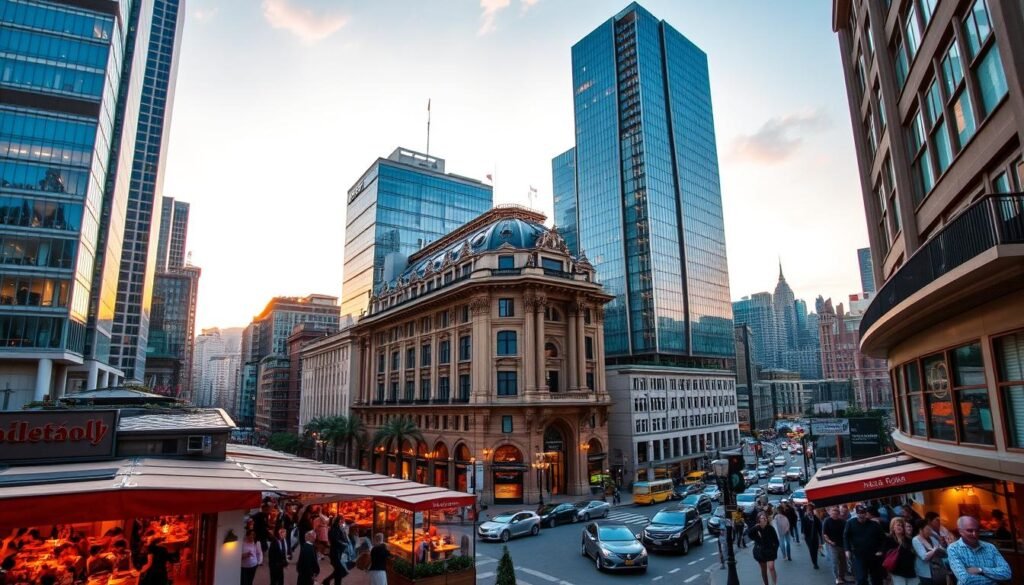
A good city itinerary means balancing a museum morning with a neighborhood afternoon and a booked table at night. I build a plan so you spend less time rushing and more time soaking in each place.
France and Spain top arrivals and receipts in 2024, which shows wide rail links and deep cultural scenes. I string Paris and Barcelona by train, plan museum mornings, and leave afternoons for walks, tapas, and smaller galleries.
Japan surged in receipts in 2024; the Tokyo–Kyoto shinkansen makes a Tokyo energy day and a Kyoto temple evening easy. I book restaurants near transit hubs and time meals to avoid lines.
United Kingdom uses London as a simple base. Stonehenge fits a one-day tour, and some operators offer inner-circle access if you want closer views.
- My rule: museum mornings, neighborhood afternoons, and a reserved dinner slot.
- Pick day trip options—art, food, or history—so each stop feels tailored to your interests.
- Use rail and short tours to save time and fold monuments into a smooth route.
“Book key restaurants and museum slots early—then let the city unfold at a human pace.”
Adventure-forward countries for hiking, wildlife, and big landscapes
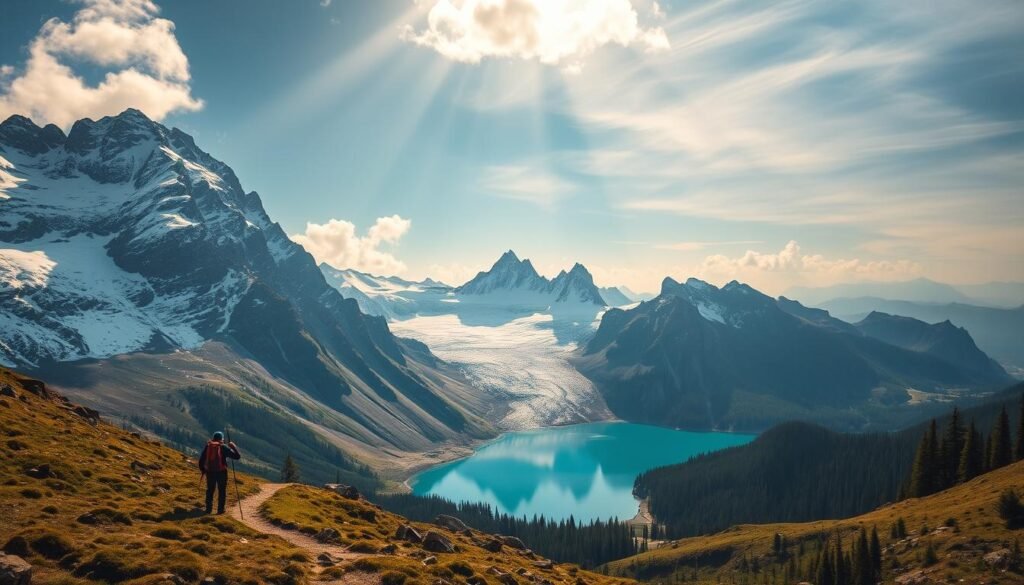
For travelers after big skies and wild encounters, I map routes that pair active hiking with slow wildlife mornings.
South Africa & Namibia: safaris, dunes, and coastal road trips
I outline a loop that starts in the Western Cape, follows the Garden Route, and drops into national parks for early safari drives.
From there you can cross into Namibia for Etosha wildlife mornings and Sossusvlei dune climbs. This rhythm mixes safari dawns, short hikes, and long ocean-view drives.
Vietnam: Ha Long Bay options
Ha Long Bay works two ways: the classic overnight junk for quiet coves, or a larger daytime cruise as part of a regional itinerary.
I compare pace, cost, and cabin comfort so you pick the way that fits your energy for sea nights or active day trips.
Ecuador & the Galápagos: wildlife up close without a cruise
The Galápagos allow land-based stays on one island and island hops by speedboat to see iguanas, finches, and marine life up close.
People on the ground point you to less-busy landing sites and timing windows when wildlife is most active.
- Day mix: alternate light hiking days with wildlife mornings to stay fresh.
- Pacing tip: leave room for roadside viewpoints and golden-hour stops.
- Packing: layers, binoculars, sturdy shoes, and a small daypack for early starts.
“Timing matters—ask local guides about quieter gates and the best hours for wildlife.”
Cruise and road-trip ways to see more in less time
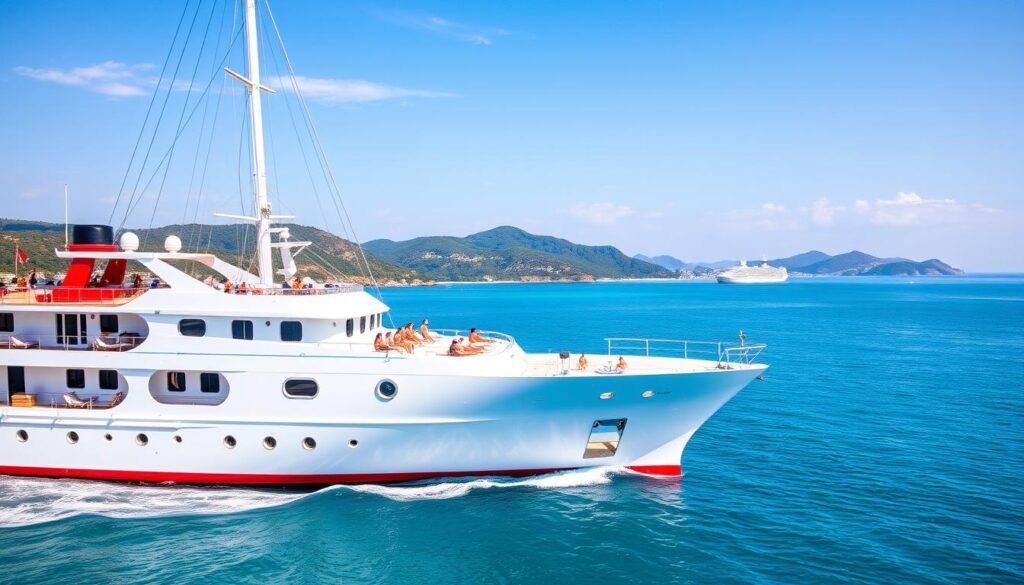
I plan road and sea routes so you cover dramatic views without losing the calm moments that make them matter.
Alaska: when a cruise makes sense and when land wins
Cruise itineraries showcase tidewater glaciers and whale watching in compact windows. They let you see remote icefronts without long drives.
Land routes add Denali and Kenai Fjords access and more flexible day control. Mix both: fly into Anchorage, spend a few hotel nights inland, then board a coastal cruise for glacier time.
Norway fjords and scenic drives
Fjord trips pair ferry crossings with hairpin coastal drives. I book ferries at dawn, then use afternoon drives for short viewpoint stops.
Choose ferries that link small ports so you can hop between villages and squeeze more places into limited time.
Australia: reef views by sail and air
The Great Barrier Reef reveals scale from the sky. I add a scenic flight over Heart Reef, then spend sailing days in the Whitsundays and relaxing on Whitehaven Beach.
A resort night on an island gives unmatched sunrise and sunset access compared with a same-day return flight.
- Ship vs hotel nights: ships cover more mileage; hotels give deeper local hours.
- Picking cabins and ports: quieter decks, smaller ports, and midday shore windows preserve calm moments.
- Daily structure: morning sail or drive, midday short hike or beach stop, late-afternoon viewpoint and relaxed evening.
“Stretch mileage with ships, but save real time for places by adding targeted hotel nights or a resort stay.”
| Region | Ideal mix | Why it works |
|---|---|---|
| Alaska | Cruise + 2–3 land nights | Glaciers and whales by sea; Denali access by land |
| Norway | Ferry loops + scenic drives | Fjord vistas with flexible stopovers |
| Australia (Whitsundays) | Sail days + island resort night | Air views of Heart Reef; beach time and island sunrise |
Best countries to visit
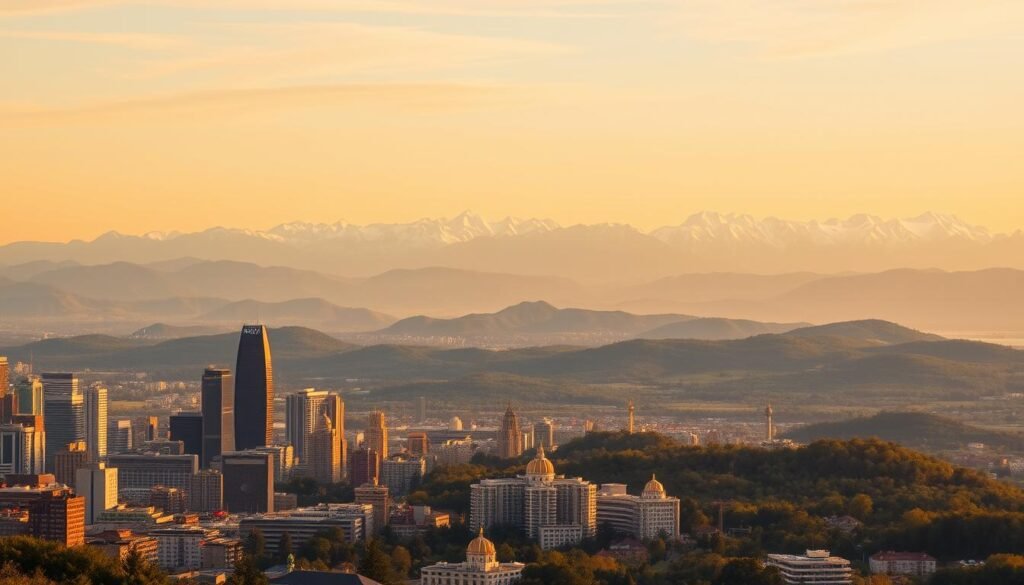
I pick a compact list that blends headline sights with quiet corners, so your trip gives both instant thrills and slow discoveries.
I focus on what arrivals and receipts mean right now: high arrivals usually mean lively city life, while high receipts usually signal strong services and smoother logistics.
I’ll recommend one starting place per destination and show how to pair it with a second city for depth without extra transit. That way you get an icon and a lesser-known place in one trip.
- France (Paris + Loire): museums and rail links make day trips easy.
- Spain (Barcelona + Seville): fast culture shifts — coastal energy and inland tapas.
- United States (New York + Hudson Valley): city intensity with quick rural escapes.
- Italy (Rome + Puglia): art and slow coastlines for food-led days.
How I help you choose: pick based on art vs food pace, coast vs city energy, and season so closures and crowds won’t spoil the experience.You can learn more about best-time-to-visit-alaska
“Start your first day in a place that matches the trip you want—city energy or slow coast—and add a nearby second city for contrast.”
| Destination | Start place | Why start here |
|---|---|---|
| France | Paris | Arrivals and rail links; easy day trips to Loire châteaux |
| Spain | Barcelona | Coastal life, strong receipts for tourism services, flights and trains |
| United States | New York City | High receipts; world-class museums and short rural escapes |
| Italy | Rome | Art, food, and direct links to quieter coastal regions |
When to go: the best season for sun, snow, and shoulder deals
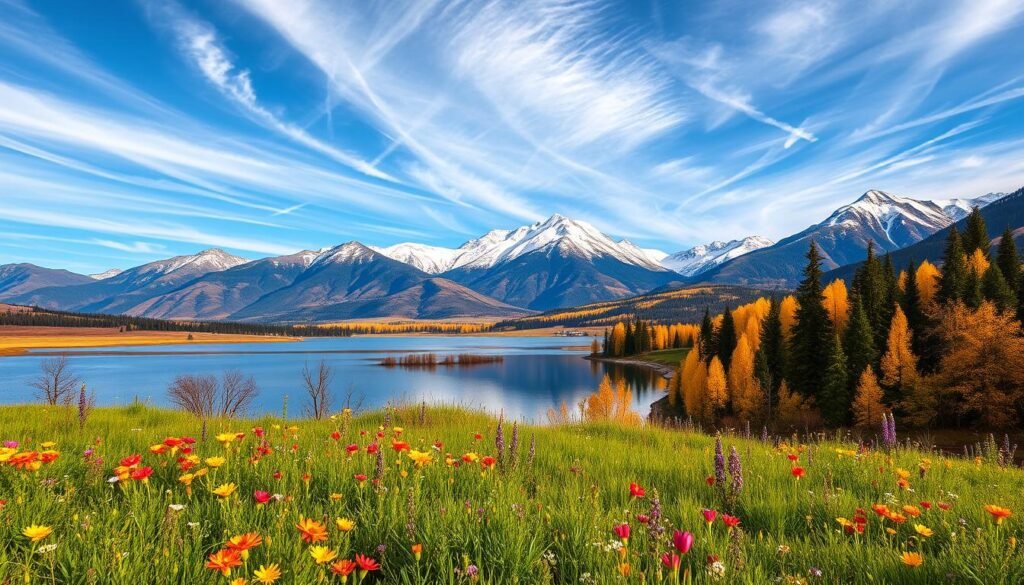
Picking the right season changes what you see and how much you pay for a trip. I choose dates by matching weather goals with crowd and cost realities.
Summer vs shoulder vs winter for top destinations
Summer gives long days and reliable sun in many coastal places, but it often brings peak prices and crowds.
The shoulder season is my favorite compromise: light is softer, lines shrink, and rooms cost less. For example, Victoria Falls has great rainbow views in the shoulder months with less spray than at peak flow.
Winter can be magical for snow or sky shows. Iceland’s Northern Lights run Nov–Feb while the Blue Lagoon works year-round, so winter there buys dramatic nights without losing thermal comforts.
Timing national park visits to beat the crowds
For national park stops I work by hour, not just day. Aim for first light or late afternoon and use midday for a rest or a town visit.You can learn more about best-time-to-visit-puerto-rico
Plitvice Lakes fills by mid-day with tour buses—early or late entries give clearer water shots and quieter paths.
| Goal | When | Why |
|---|---|---|
| Northern Lights (Iceland) | Nov–Feb | Longest nights and higher aurora chance |
| Victoria Falls viewing | Feb–May (peak); shoulder months around Jan & Jun | High flow gives dramatic spray; shoulder eases access and adds rainbows |
| Plitvice Lakes | Early morning or late afternoon | Fewer buses, better light for photos |
| Coast-to-mountain combo | Shoulder season weeks | Warm coast days and cooler mountain mornings in one itinerary |
My day way: start early for quieter highlights, rest through mid-day, then return for golden hour. That structure gives you fewer crowds and better light for photos and memories.
How I choose: matching your trip length and travel style
A clear plan for a day, a week, or a few weeks keeps your travel calm and rewarding.
One day to a long weekend: city breaks and day trips
For a one-day or long-weekend escape, I anchor in a single city and add one nearby day trip. That keeps transit low and gives you a full morning in a top sight and an afternoon in a quieter place.
One week: classic intro itineraries by country
For a week, I balance marquee sites with neighborhood time. In places with dense rail and flight links—France, Spain, the United States, Italy, Japan, and the United Kingdom—you can mix a main hub and a slower second stop without long transfers.
Two to three weeks: cross-country and multi-country combos
With two to three weeks I link regions by train or short flights. I sequence big-city days with smaller towns so the pace stays fresh and fatigue stays low.
- Map one-day and long-weekend plans that focus on a city plus one day trip for variety and low transit stress.
- Use a week to pair a headline sight with local neighborhoods and a short side trip.
- For multiple weeks keep the way between stops short—trains and short flights save time and give you more places.
- Trim your list so the trip fits real time; fewer places often means deeper memories.
- Build buffer days to absorb delays and pivot without losing key experiences.
| Length | Structure | Why it works |
|---|---|---|
| 1–3 days | City base + 1 day trip | Max sight time with minimal transit |
| 1 week | Main city + 1–2 neighborhood days + short side trip | Good balance of highlights and daily life |
| 2–3 weeks | Regional loop by train/short flight | Deeper exploration with relaxed pacing |
Budget vs luxury: smart ways to save or splurge
A smart mix of splurges and bargains makes the whole trip feel richer. I pick one clear splurge and then free up days by saving elsewhere. That keeps the journey memorable without blowing the budget.You can learn more about best-hawaiian-island-to-visit
Hotels, resorts, and boutique stays I’d book again
I choose stays that add a moment you’ll remember. In Egypt I’d book the Marriott Mena House for its pyramid views. In Peru the Inkaterra Machu Picchu Pueblo Hotel places you near the ruins for easy dawn access.
The Reykjavik EDITION is my premium city base in Iceland, and in Alaska I prefer the Hotel Captain Cook for easy logistics. For Patagonia, explora Patagonia Hotel Salto Chico bundles guided days into one seamless option.
Affordable experiences that feel first-class
I hunt for moments that lift a trip: sunrise entries, small-group tours, and discounted scenic flights. Often a single guided day or a timed entry creates more memory than many small purchases.
- Split your budget: two splurge nights, the rest smart.
- Look for packages that include meals, transfers, or a guided day.
- Booking way: compare loyalty rates, flexible channels, and refundable options.
“Build one true ‘wow’—a helicopter, chef’s table, or balloon ride—and let smaller savings fund it.”
My rule: spend on the stay or moment that shapes the whole experience, then use smart options so the rest of your trip feels relaxed and full.
Food, restaurants, and local flavors I plan trips around
Food shapes where I walk, who I meet, and which hours feel like the real local rhythm.
Where the cuisine elevates the whole journey
High-receipt destinations — Spain, France, Japan, and the United States — show why dining scenes matter. I map markets, tapas routes, bistros, and izakaya so meals guide my day rather than interrupt it.
I pick which places to visit by what they do best. A market morning, a stall that sells out, or a ramen alley becomes the arc of a single trip.
- I book key restaurants at the right time to skip lines and sit beside locals and other people.
- I turn meals into walking routes that link neighborhoods and small bites across a city.
- I teach one simple way to find the local thing a region excels at: follow where chefs go after service.
| Action | Why it works | Example |
|---|---|---|
| Market morning | Fresh flavors and local energy | La Boqueria stalls in Barcelona |
| Early dinner booking | Skip queues, join local rhythm | Izakaya window seats in Tokyo |
| Chef-following | Find trusted favorites off lists | Neighborhood bistros in Paris |
Logistics that make or break a great country trip
Good logistics save you stress and free up the hours you actually want for exploring. I start by checking entry rules and realistic transit times so your first day runs smooth.You can learn more about
Visas and border notes. I check e-visas and one-day border options early. For example, Zimbabwe offers a single-day visa from Zambia at Victoria Falls—handy for a cross-border day and a helicopter tour.
Visas, transport, and booking tours the smart way
I prefer private transport when timing matters—early access at the Great Wall beats bus crowds that arrive near 10:00 am. Petra works well as a long day trip from Amman by private car or bus.
- Book private when dawn or golden hour matters; book small-group when social and savings matter.
- Choose transport options like Galápagos land-based speedboats if you want island hops without a cruise.
- Pad transfers so you keep the best hour at a site without risking a missed connection.
I keep a short list of reliable ticket and schedule sites. That way I confirm slots, avoid lines, and build safe backups if a plan shifts.
“Plan for extra time between places—one buffer can save the whole day.”
| Need | Smart move | Example |
|---|---|---|
| Visa | Check e-visa or day entry | Victoria Falls single-day visa |
| Timing | Private transfer | Great Wall early access |
| Island hops | Land-based boats | Galápagos speedboats |
Bucket list countries I’d send my best friend to first
For a first international passport stamp, I pick places that feel welcoming and easy to navigate. High-arrival, high-receipt spots give you reliable transit, lots of English signage, and cities that work in a single week.
Quick-hit list for first-time international trips from the United States
My one-week formula: one city base + one focused day trip. That keeps packing simple and gives a real sense of the place without nonstop transit.
- Spain — Barcelona base, day trip to Girona or Montserrat for contrast and easy trains.
- France — Paris base, Loire châteaux or Versailles as a calm day out.
- United Kingdom — London base, day trip to Bath or Oxford for history and short trains.
- Italy — Rome base, Tivoli or a coastal day to feel both food and slow coast time.
- Japan — Tokyo base, day trip to Hakone or Kyoto by shinkansen for temples and simple transit.
Decision points: pick food, art, or outdoors as your theme and build one paid highlight (museum, guided tour, or market class).
| Country | City base | One-week focus |
|---|---|---|
| Spain | Barcelona | Walkable neighborhoods, coastal day trips |
| France | Paris | Museum mornings, château afternoons |
| United Kingdom | London | Transit ease, classic day excursions |
| Italy | Rome | Food-led days and easy regional trips |
I also mention New Zealand as a stretch idea: save it for a longer trip when you want wide landscapes and slower pacing.
Book now: flights and one key day activity. Leave a couple of evenings free so the city can surprise you.
Conclusion
This final note ties the facts and field tips into a simple plan you can start this week. I’ve visited places that still surprise me and others I’ve never rushed, because some need calm weeks and the right mood.
Pick the one best match for your window: a national park day, an island morning, or a city where history sits on every corner. Use tactics—Great Wall sunrise, Petra as a long day from Amman, Machu Picchu across two entries, the Giza detail that Khufu and his son Khafre share the plateau, Iceland’s winter lights, Alaska by cruise or land, and Galápagos land hops.
Strong, pair data with instinct, book a couple of first things, leave flexible days, and trust how a country makes you feel on arrival. Do that and you’ll come home with stories that make your mind and home feel fuller—and ready for the next trip.


